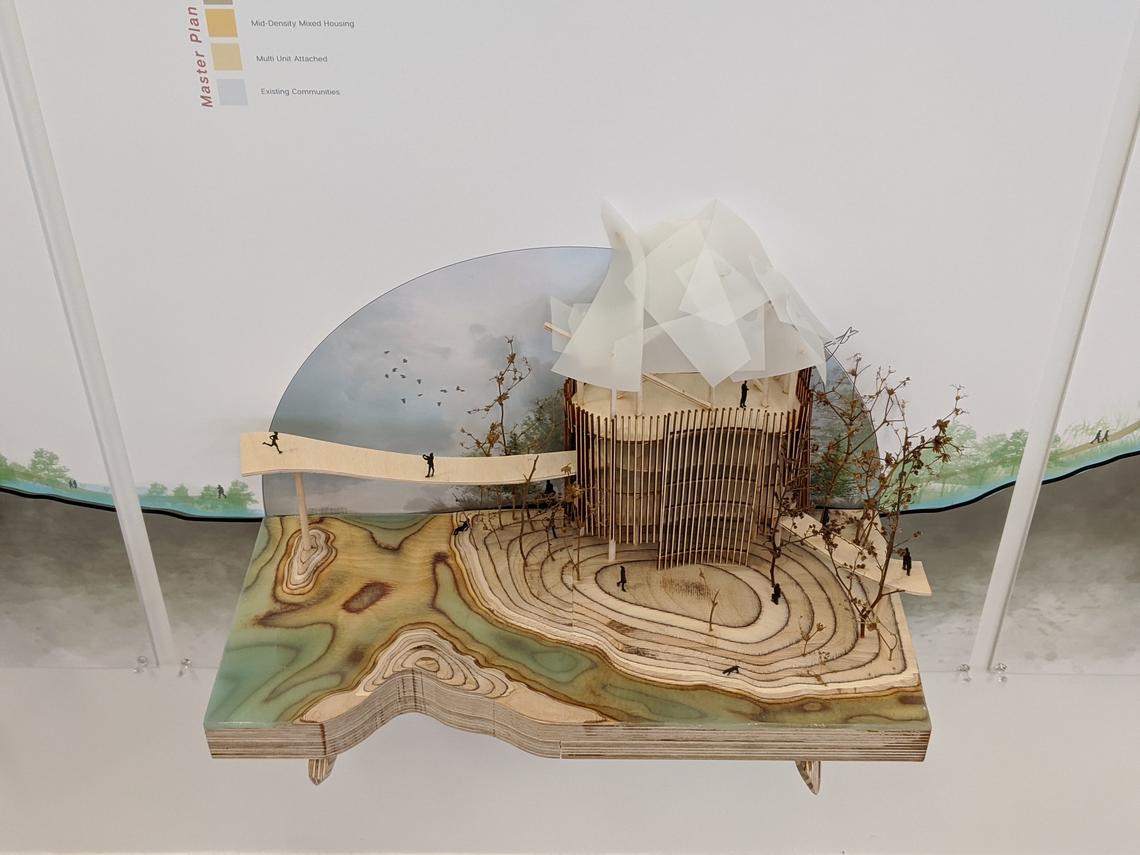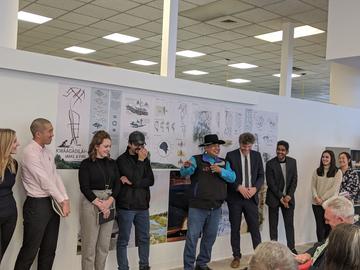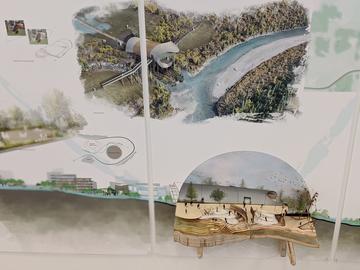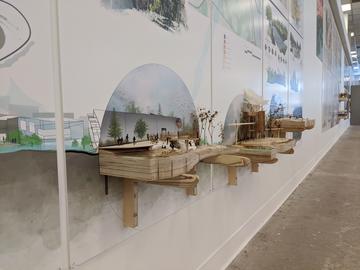June 18, 2020
Fall 2019 Design Studio explores cross-culture approaches to design

Last fall, a group of students in the School of Architecture, Planning and Landscape (SAPL) opted to participate in the Urban Design Studio ‘Interchange: Cross Culture Approaches to Design’ — a studio offering, with a twist.
Instead of concentrating on one of the three disciplines: architecture, planning or landscape architecture, the course integrated students from all three areas of study. It was taught by a team of instructors from two disciplines: Dr. Graham Livesey, PhD, professor of architecture and Dr. Fabian Neuhaus, PhD, professor of urban planning.
SAPL students are expected to take a Design Studio course each semester. The focus varies depending on the instructor and program of study, or discipline, but the intent is the same: to immerse students in the design process by asking them to create projects for a particular site with a particular set of requirements, while critiquing and refining those ideas over the course of a semester.
Neuhaus and Livesey selected the proposed TAZA Development site on TsuuT’ina land as the area of focus for the students’ designs. Choosing TAZA allowed the studio to mimic true project design experience by giving students access to developers Zeidler and Canderel.
Livesey and Neuhaus were joined by Hal Eagletail, a knowledge keeper from the TsuuTina First Nation as specially appointed co-instructor for the course, and they brought in SAPL researcher Sandra Abegglen to study the use of a reflective learning tool to help students manage the design process.
Through the participation of Elders from the Tsuut’ina Nation, guided field trips to the reserve and engagement with historic and design-specific literature about First Nations and First Nations culture, students were able to integrate western and Indigenous knowledge to focus on cross-cultural design and Indigeneity.
The knowledge students accumulated over the term spilled into their project designs, as they incorporated culturally significant geometrical forms and patterns, important plants and the use of strategic burns to manage stretches of land.

School of Architecture, Planning and Landscape
Teaching award for outstanding learning experience
Livesey and Neuhaus, along with Eagletail and Abegglen, have received a University of Calgary Teaching Award for Team Teaching. The award, which recognizes colleagues who integrate their knowledge into a single course to create an “outstanding learning experience for students” is in recognition of their considerable interdisciplinary, cross-cultural efforts with the Fall Design Studio.
Those efforts resulted in a deeply memorable learning experience for students. SAPL student Crystal Hofer, MPlan’20, says, “The challenges presented in this studio have strengthened my personal views that urban form regardless of site is nothing without the community that brings it together.
The difficult questions raised during this semester will empower me to facilitate the growth of great communities based on commitment to understanding and diversity of thought and people.
Gilbert Crowchild, an Elder from the TsuuT’ina Nation, says, “The design team has done well to guide the students to develop a considered and respectful interpretation of TsuuT’ina culture and proposed intriguing ideas for the Nation’s TAZA project.”
Neuhaus thinks there is great merit to the team’s approach. “Beyond the studio, this collaboration has the potential to act as a formula for other courses on how Indigenous knowledge, ways of doing and perspectives can find their way into the classroom.”
Livesey values the undertaking, saying, “It was an ambitious and rewarding teaching experience. I believe everyone involved learned a lot. It was a privilege to teach with Hal Eagletail, who brought his wealth of knowledge and gracious humour to the entire process.”
Eagletail says “our two great communities — Calgary and TsuuT’ina — have a duty to live and learn from one another.” He describes the experience as an “overwhelmingly successful evolution,” particularly in light of the students’ admittedly limited knowledge of Indigenous culture. He says the ring road will enable Calgary and TsuuT’ina to nurture their neighborly relationship and offer an example to all Canadians of the reconciliation that is possible through understanding.
The teaching team is considering how to present the Design Studio in future, based on student feedback and the successes and challenges of the Interchange course. Some students advocated for the hire of an Indigenous designer to further expand student learning. Having more First Nations people in academia and, presumably, design is a priority for First Nations communities.In collaborating with the TsuuT’ina Nation, or other First Nations, the Design Studio team hopes to be able to support that goal by exposing more young people to the possibility of a career in design.













